Common Sunflower, Kansas Sunflower, Mirasol - Helianthus annuus
|
Helianthus annuus - Common Sunflower, Kansas Sunflower, Mirasol. Officially classified as a Secondary Noxious Weed in Iowa, Helianthus annuus can be quite weedy in other parts of its range as well, but has an attractive flower. It is found in dry open areas and disturbed sites in every state, is native from Minnesota to Texas and westward, and is introduced to the rest of the United States, including Alaska and Hawaii. It is introduced into most of Canada. This is the species that is the origin of the commercially-grown sunflower. It has a long history of use as a food, being originally cultivated for consumption by Native Americans, who ate and ground the seeds for use in flours, used them in the production of cooking oils, ate the buds boiled, and used the plants in various ways medicinally. The plants were also used for production of dyes, ornamentally, and as fuel. It is the state wildflower of Kansas, and is the state motor route symbol, so you'll see it not only everywhere along the roads of Kansas, but on the road signs as well.
Found in:
AK, AL, AR, AZ, CA, CO, CT, DC, DE, FL, GA, HI, IA, ID, IL, IN, KS, KY, LA, MA, MD, ME, MI, MN, MO, MS, MT, NC, ND, NE, NH, NJ, NM, NV, NY, OH, OK, OR, PA, RI, SC, SD, TN, TX, UT, VA, VT, WA, WI, WV, WY, GS
Leave comments on Helianthus annuus at this link. | 
Distribution of Helianthus annuus in the United States and Canada:
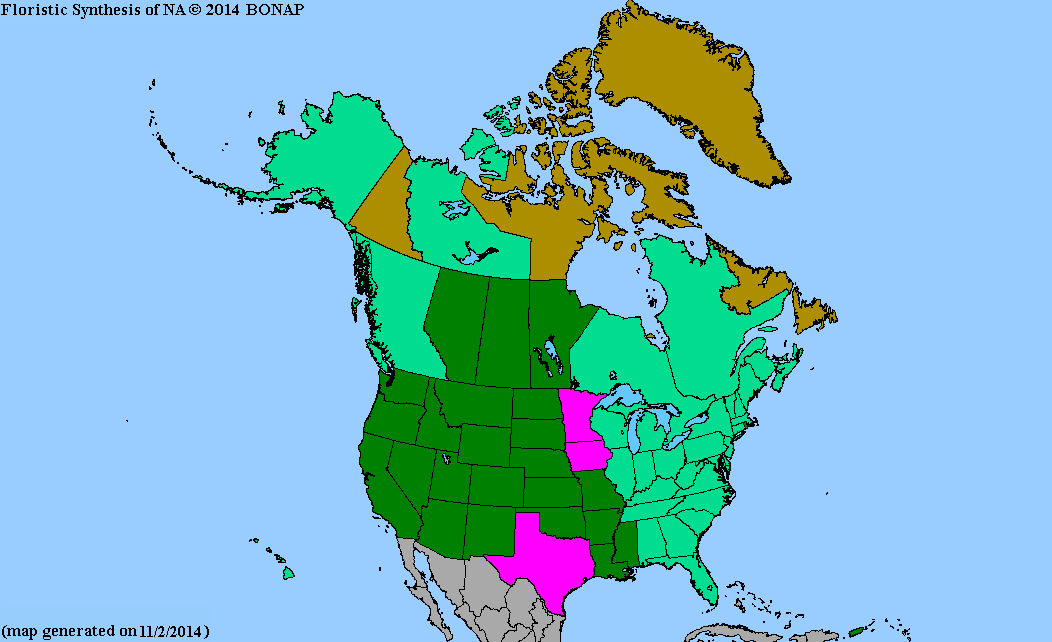
Map courtesy of The Biota of North America Program.
Map color key
Search Our Database: Enter any portion of the Scientific, Common Name, or both.
Do a general Google search of the entire site:
#ad
 Follow USWildflowers on Twitter
#ad
| | Site: Ellis County, KS Date: 2016-August-24 | Photographer: Gerald C. Williamson
Nikon D7000
| | The flower head of Helianthus annuus is a composite - the petal-like structures are the 17 to 30 yellow ray florets which are sterile. The central part of the flower head is made up of usually 150 to more than 1,000 disk florets, which are fertile and produce the seeds for which the Sunflower is famous. The corolla of the disk florets is usually reddish. The entire flower head is usually 3 to 6 inches across, but cultivars of this species may be much larger. | | 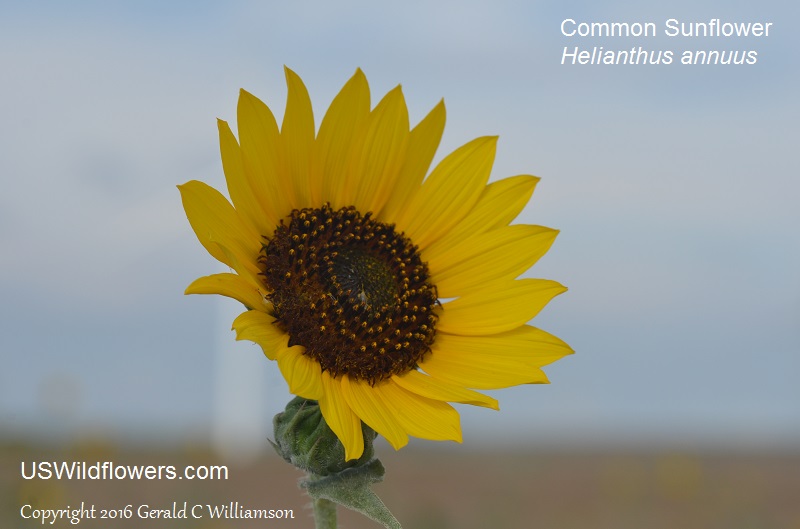
| | Site: Willard Bay State Park, Box Elder County, UT Date: 2016-August-31 | Photographer: Gerald C Williamson
Nikon D7000 | | One reason that 'sunflower' is the common for Helianthus species - besides the sunny appearance of the flower - is that their flower heads follow the sun through the day. Here one flower has turned toward the rising sun, while the second, facing the camera, still has its head facing the direction of last night's setting sun. | | Click on the photo for a larger image
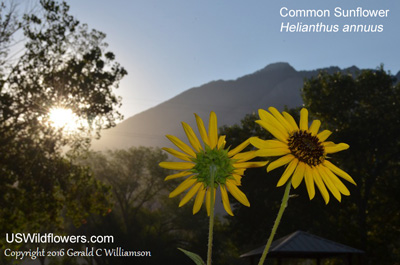
| | Site: Emory County, UT Date: 2016-August-30 | Photographer: Gerald C Williamson
Nikon D7000 | | While the Common Sunflower normally had reddish-brown (or are they brownish-red?) disk florets, they are occasionally yellow, frequently tinged with red. Even then, with the brown stamens, the disk will look dark. | | Click on the photo for a larger image
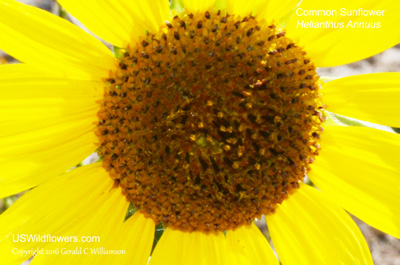
| | Site: Bear River Migratory Bird Preserve, Box Elder County, UT Date: 2016-August-31 | Photographer: Gerald C Williamson
Nikon D7000 | | Helianthus annuus is usually at least 2 feet tall, and may grow to 10 feet. It branches generously, and the many flower heads form at the end of the branches. The leaves are mostly alternate, but may be opposite in parts of the plant. The stems are usually hispid, and are green, frequently turning red as they age. | | Click on the photo for a larger image
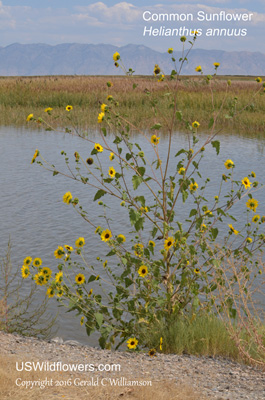
| | Site: Ellis County, KS Date: 2016-August-24 | Photographer: Gerald C Williamson
Nikon D7000 | | The leaves of Helianthus annuus are ovate to triangular in shape, and a medium green. The margins are usually serrate, but may be entire. | | Click on the photo for a larger image
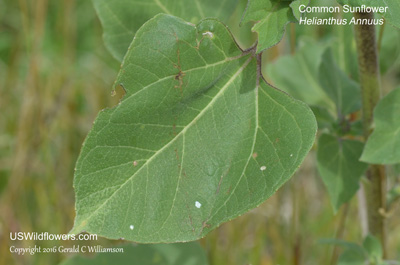
| | Site: Emory County, UT Date: 2016-August-30 | Photographer: Gerald C Williamson
Nikon D7000 | | The leaves are carried on petioles which can be from one-half inch to eight inches long. The petioles, stem, and leaf surface are usually hispid. | | Click on the photo for a larger image
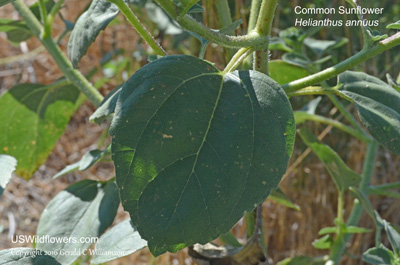
|
References used for identification and information:
|
|
| |
| #ad
|
|








